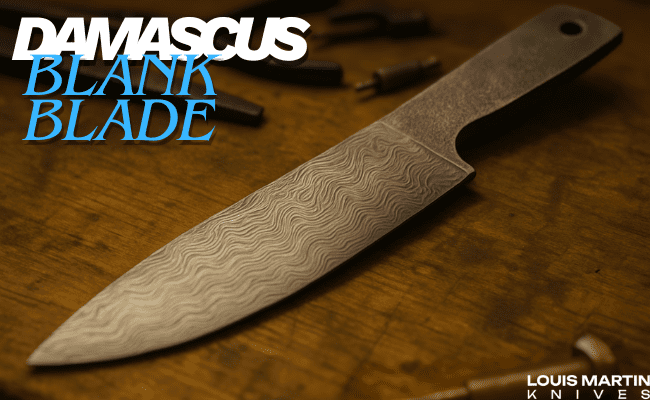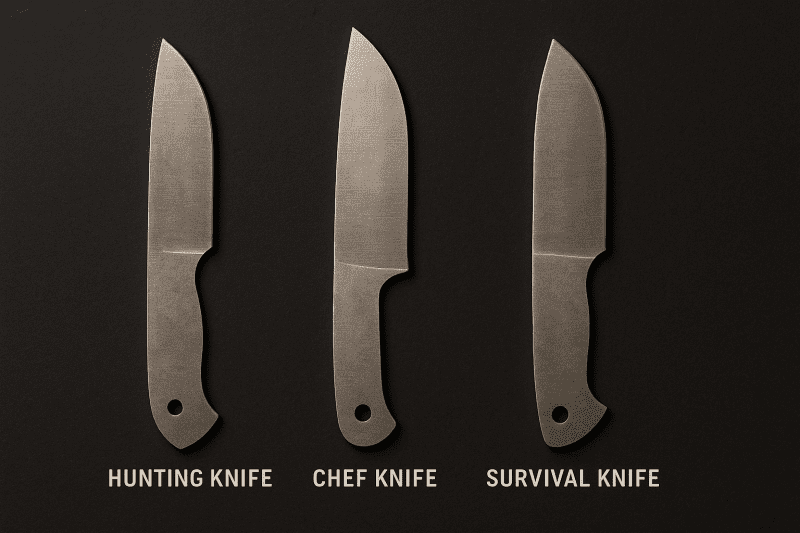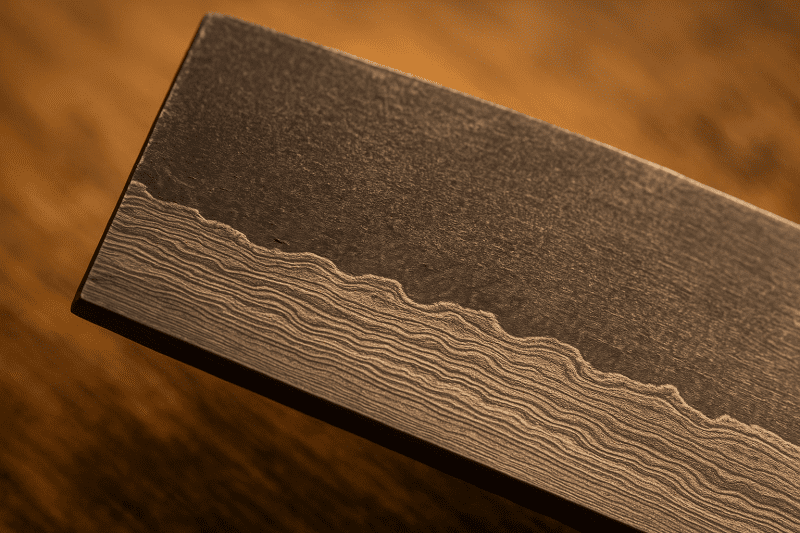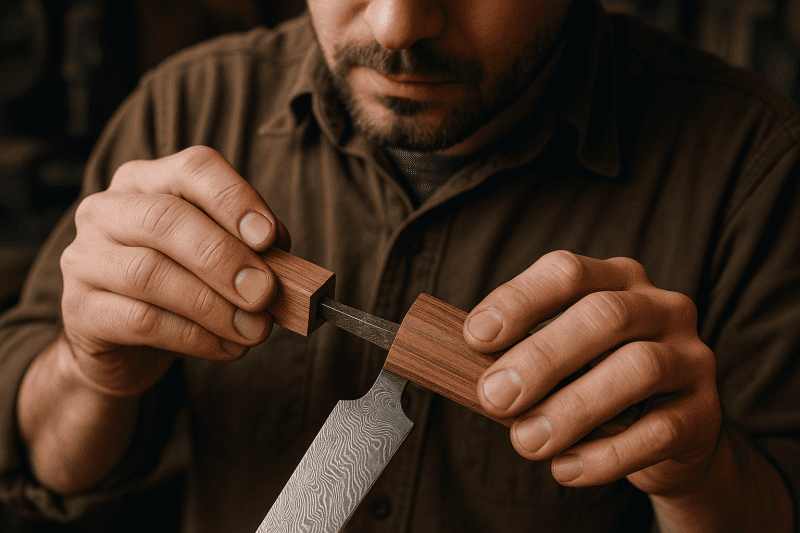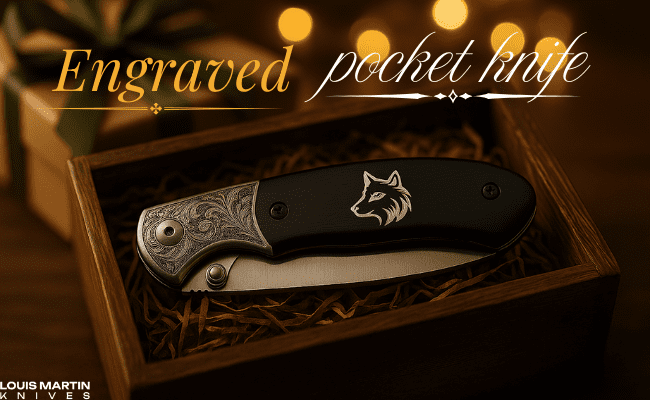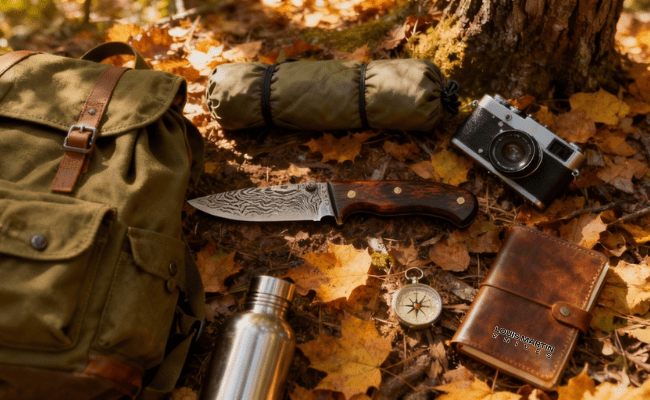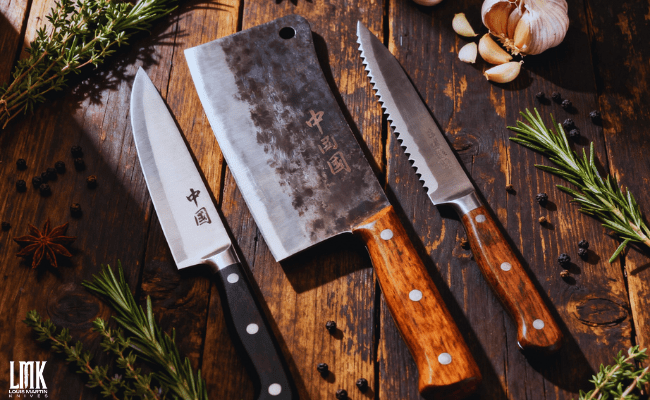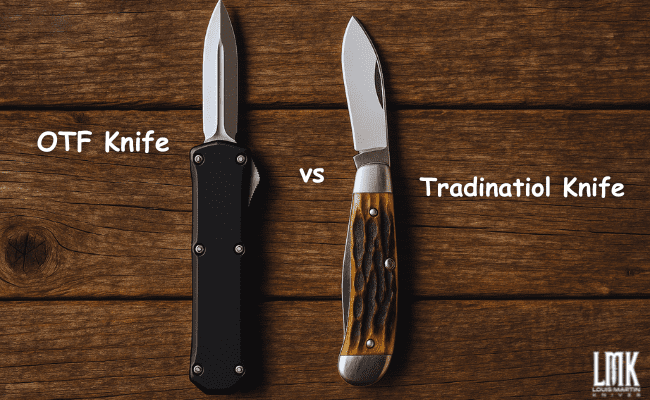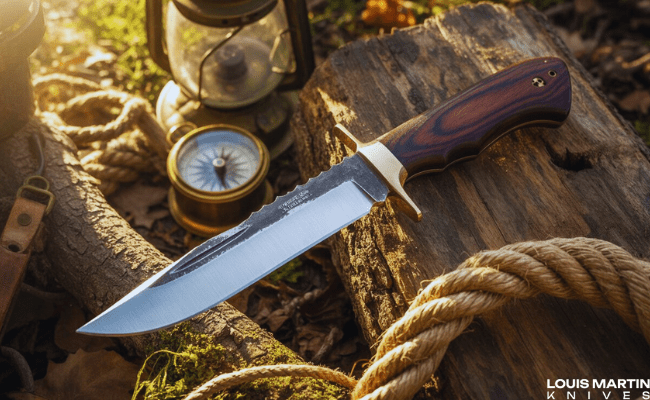If you’re someone who enjoys knife making, then you already know how important it is to start with a good blade. The foundation of every great custom knife begins with the right Damascus blade blanks. These blanks not only decide how your knife will perform but also how it will look and feel in your hand. With so many knife blades blanks available, choosing the right one can feel overwhelming. But don’t worry, with Custom knives this guide will help you understand what matters most when selecting the perfect Damascus blank for your build.
1. Understanding Damascus Blade Blanks
Before you dive into selecting a blade, it’s helpful to understand what makes Damascus blade blanks so special. Damascus steel is known for its stunning wavy or swirling patterns created by layering and forging multiple types of steel together. But it’s not just about looks, the process results in a blade that’s both strong and flexible, capable of holding a sharp edge longer than many other steels.
When you buy blank knife blades for sale, you’re essentially buying the “heart” of your future knife. It’s the core piece that defines performance, durability, and style. A good Damascus blank allows you to build a knife that isn’t just functional, but also an expression of craftsmanship.
2. Decide the Purpose of Your Knife
Before selecting from a variety of knife blade blanks, think about what kind of knife you want to build. Is it a hunting knife, chef knife, folding knife, or survival blade? The purpose will help you determine the right shape, thickness, and size.
- Hunting Knives: Look for Damascus blade blanks that are thick and strong, ideal for skinning and cutting through tough materials.
- Chef Knives: Choose a thinner and sharper blade blank that offers precision and control.
- Everyday Carry (EDC) Knives: Medium-sized blank knife blades for sale with a good balance between strength and flexibility are perfect.
- Tactical or Survival Knives: Go for a full-tang san mai blade blank or Damascus blank for superior durability.
Each type of knife has its unique requirements, so knowing your end goal is the first step to making a smart choice.
3. Understand Steel Composition
Not all Damascus blade blanks are made the same. The steel composition determines how your knife performs under pressure, resists corrosion, and holds an edge. High-carbon steels tend to hold sharper edges for longer but require more maintenance to avoid rust. Stainless steel, on the other hand, is more resistant to corrosion but can be slightly harder to sharpen.
Some makers prefer san mai blade blank designs, a traditional Japanese technique where a hard steel core is sandwiched between softer outer layers. This provides the best of both worlds: a razor-sharp edge and improved durability. It’s a great option for those who want performance with a bit of artistry.
4. Check the Tang Design
When buying knife blade blanks, you’ll notice that they come in different tang styles: full tang, partial tang, and hidden tang.
- Full Tang: The metal runs through the entire handle, offering balance and strength. Ideal for heavy-duty knives.
- Partial Tang or Hidden Tang: Lighter in weight and better suited for decorative or kitchen knives.
For example, if you’re looking for blank knife blades for sale to craft a camping or hunting knife, full-tang Damascus blade blanks are the most reliable choice. They’re built to withstand impact and ensure the knife doesn’t break during tough use.
5. Pick the Right Pattern and Aesthetic
One of the most appealing parts of working with Damascus blade blanks is their mesmerizing pattern. The layers of folded steel create natural designs like raindrops, ladders, twists, or feather patterns. While these don’t directly affect performance, they greatly enhance your knife’s beauty and uniqueness.
If your goal is to build a collector’s piece or a knife for display, the pattern can make a big difference. However, if you’re building a working tool, balance aesthetics with functionality, make sure the knife blades blanks are well-forged and properly heat-treated.
6. Length, Thickness, and Grind Type
These three factors determine how your knife will perform in the real world.
- Length: Shorter Damascus blade blanks are ideal for precise tasks like skinning or kitchen use, while longer ones are better for outdoor or survival knives.
- Thickness: Thicker blades are more durable and suited for chopping, while thinner ones offer better slicing control.
- Grind Type: Look for the right blade grind, flat, convex, or hollow, depending on your project. A flat grind gives a good balance of sharpness and strength, perfect for most builds.
When browsing blank knife blades for sale, always check these specifications to ensure the blank matches your intended purpose.
7. Handle Compatibility
Even the best Damascus blade blanks can feel uncomfortable if they don’t fit well with your chosen handle design. Always consider the tang shape and handle attachment points. If you’re using materials like wood, bone, or micarta for the handle, make sure the blank’s design supports them.
A well-balanced knife isn’t just about blade quality; it’s also about how the blade and handle work together. The right fit ensures better control and comfort during use.
8. Heat Treatment and Hardness
Proper heat treatment is one of the most crucial aspects of high-quality knife blade blanks. A well-treated blank will have the right hardness and flexibility balance. Damascus steel generally ranges between 58–62 HRC (Rockwell Hardness), which is ideal for maintaining a sharp edge while preventing brittleness.
If you’re buying blank knife blades for sale online, check the manufacturer’s specifications to confirm the blank has been heat-treated correctly. Poor heat treatment can ruin even the best steel.
9. Don’t Overlook the Price-to-Quality Ratio
When shopping for Damascus blade blanks, you’ll find a wide range of prices. While it’s tempting to go for cheaper options, remember that quality matters more than cost. Low-priced knife blades blanks may not be properly forged or heat-treated, which can lead to poor edge retention and rusting.
On the other hand, a well-crafted san mai blade blank or high-end Damascus blank might cost more upfront but will save you time, effort, and frustration in the long run. Always balance your budget with the level of craftsmanship you want to achieve.
10. Where to Buy Quality Damascus Blade Blanks
When looking for blank knife blades for sale, choose trusted suppliers who specialize in knife-making materials. Reliable sellers provide detailed information about steel type, hardness, tang style, and patterns. They also ensure consistency in quality, something every knife maker appreciates.
If possible, read reviews or check out feedback from other makers. The right Damascus blade blanks should come from a source known for durability, beautiful patterns, and proper craftsmanship.
Final Thoughts
Building your own knife is an art, and every artist needs the right materials. Choosing the perfect Damascus blade blanks isn’t just about picking something that looks good; it’s about selecting a foundation that matches your skill, purpose, and style.
